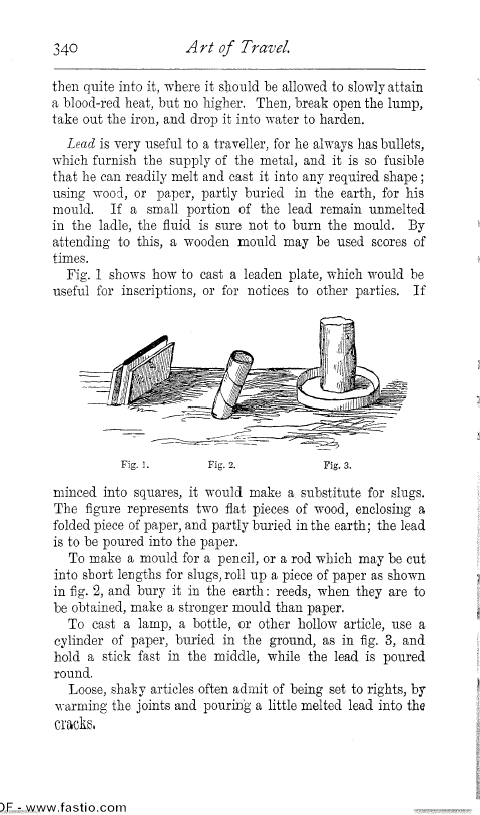340
Art of f Travel.
then quite into it, where it should be allowed to slowly attain a blood-red heat, but no higher. Then, break open the lump, take out the iron, and drop it into water to harden.
Lead is very useful to a traveller, for he always has bullets, which furnish the supply of the metal, and it is so fusible that he can readily melt and cast it into any required shape ; using wood, or paper, partly buried in the earth, for his mould. If a small portion of the lead remain unmelted in the ladle, the fluid is sure not to burn the mould. By attending to this, a wooden mould may be used scores of times.
Fig. 1 shows how to cast a leaden plate, which would be useful for inscriptions, or for notices to other parties. If
Fig. 1. Fig, 2. Fig. 3.
minced into squares, it would make a substitute for slugs. The figure represents two flat pieces of wood, enclosing a folded piece of paper, and partly buried in the earth; the lead is to be poured into the paper.
To make a mould for a pencil, or a rod which may be cut into short lengths for slugs, roll up a piece of paper as shown in fig. 2, and bury it in the earth : reeds, when they are to be obtained, make a stronger mould than paper.
To cast a lamp, a bottle, or other hollow article, use a cylinder of paper, buried in the ground, as in fig. 3, and hold a stick fast in the middle, while the lead is poured round.
Loose, shaky articles often admit of being set to rights, by warming the joints and pouring a little melted lead into the
cracks,
-
www.fastio.com

